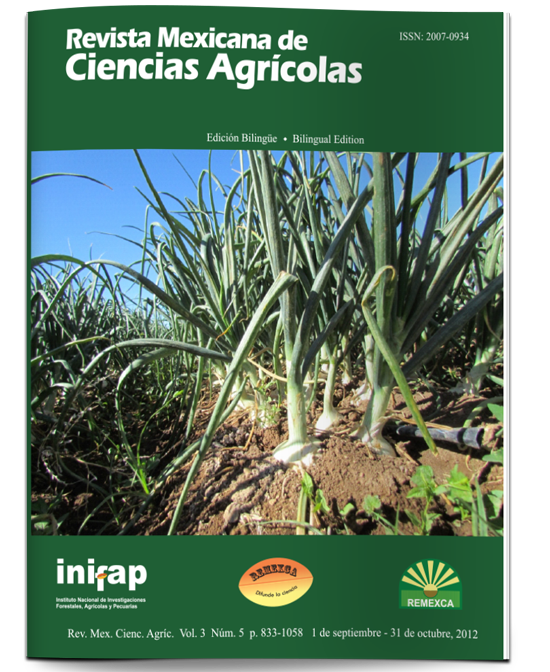Distinction and estimation of the area with conservation agriculture using SPOT 4 images
DOI:
https://doi.org/10.29312/remexca.v3i5.1379Keywords:
supervised classification, soil erosion, traditional tillage, remote perception, burned agricultural residueAbstract
The state of Guanajuato presents serious problems regarding the erosion of farming soils as a result of traditional preparation practices, and therefore, in the state of Guanajuato there are currently institutions that promote the adoption of conservation agriculture as an alternative to revert severe erosion. However, current statistics on the adoption of conservation agriculture in Mexico are not reliable, and when generating this information, the institutions that promote this practice could monitor and plan their activities. This investigation presents the results of a supervised classification of SPOT 4 satellite images, to distinguish and estimate the surface under conservation agriculture in an agricultural area of the state of Guanajuato. The methodology is based on a supervised classification analysis using the method of Mahalanobis and parallelepipeds. The analysis required the use of XS- SPOT4 and HRG2 SPOT5 images. A stratified-systematic field sampling was performed. The classification was evaluated using the matrix of confusion and the Kappa index. Of the plots verified on the field under conservation agriculture, 92.7% were identified correctly, along with 93.7% for conventional agriculture. The Kappa index calculated for Conservation Agriculture was 0.9208, and 0.9396 for conventional agriculture. The distinction and estimation of conservation agriculture were carried out for the spring-summer cycle 2010, and 16.1% was estimated for conservation agriculture, out of 262 104 ha that were classified. TheKappa index and the matrix of confusion showed that the classification supervised allowed a good separability between conservation and conventional practices.
Downloads
Downloads
Published
How to Cite
Issue
Section
License
The authors who publish in Revista Mexicana de Ciencias Agrícolas accept the following conditions:
In accordance with copyright laws, Revista Mexicana de Ciencias Agrícolas recognizes and respects the authors’ moral right and ownership of property rights which will be transferred to the journal for dissemination in open access. Invariably, all the authors have to sign a letter of transfer of property rights and of originality of the article to Instituto Nacional de Investigaciones Forestales, Agrícolas y Pecuarias (INIFAP) [National Institute of Forestry, Agricultural and Livestock Research]. The author(s) must pay a fee for the reception of articles before proceeding to editorial review.
All the texts published by Revista Mexicana de Ciencias Agrícolas —with no exception— are distributed under a Creative Commons License Attribution-NonCommercial 4.0 International (CC BY-NC 4.0), which allows third parties to use the publication as long as the work’s authorship and its first publication in this journal are mentioned.
The author(s) can enter into independent and additional contractual agreements for the nonexclusive distribution of the version of the article published in Revista Mexicana de Ciencias Agrícolas (for example include it into an institutional repository or publish it in a book) as long as it is clearly and explicitly indicated that the work was published for the first time in Revista Mexicana de Ciencias Agrícolas.
For all the above, the authors shall send the Letter-transfer of Property Rights for the first publication duly filled in and signed by the author(s). This form must be sent as a PDF file to: revista_atm@yahoo.com.mx; cienciasagricola@inifap.gob.mx; remexca2017@gmail.
This work is licensed under a Creative Commons Attribution-Noncommercial 4.0 International license.



